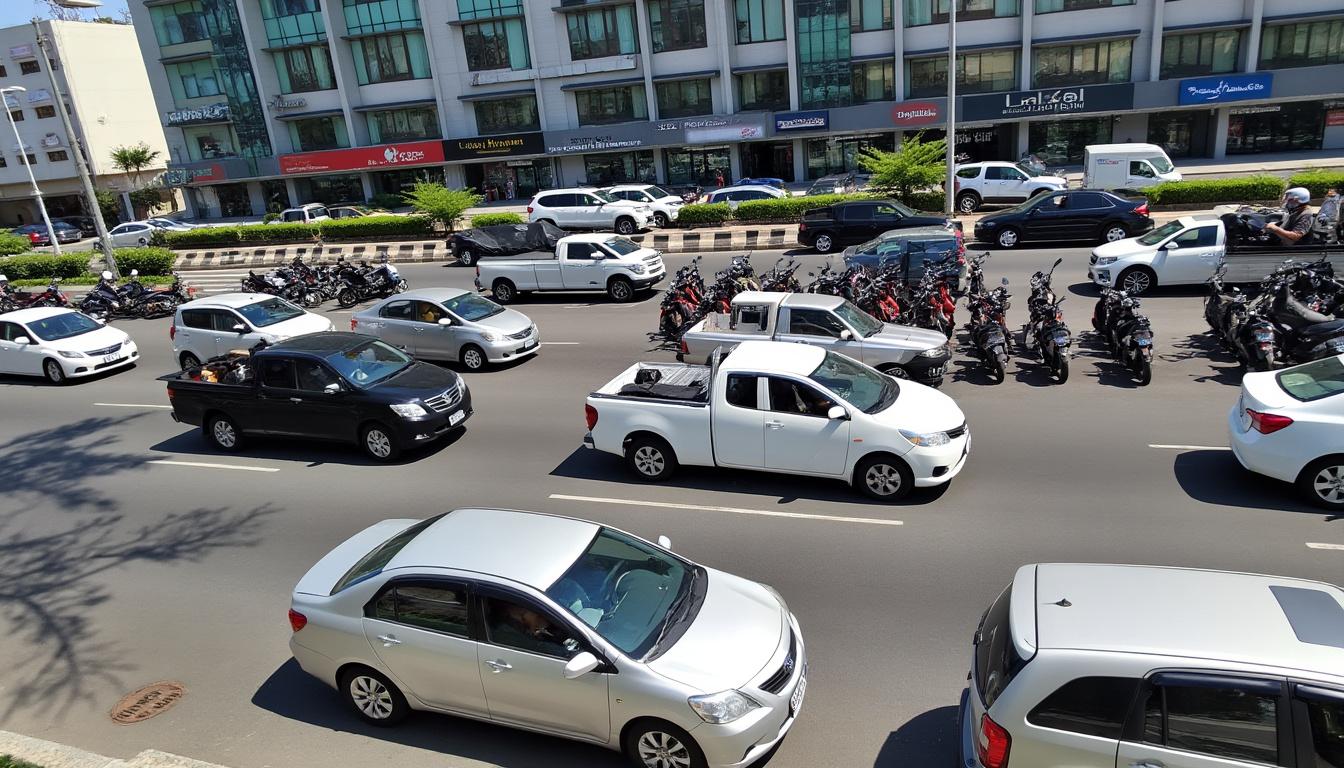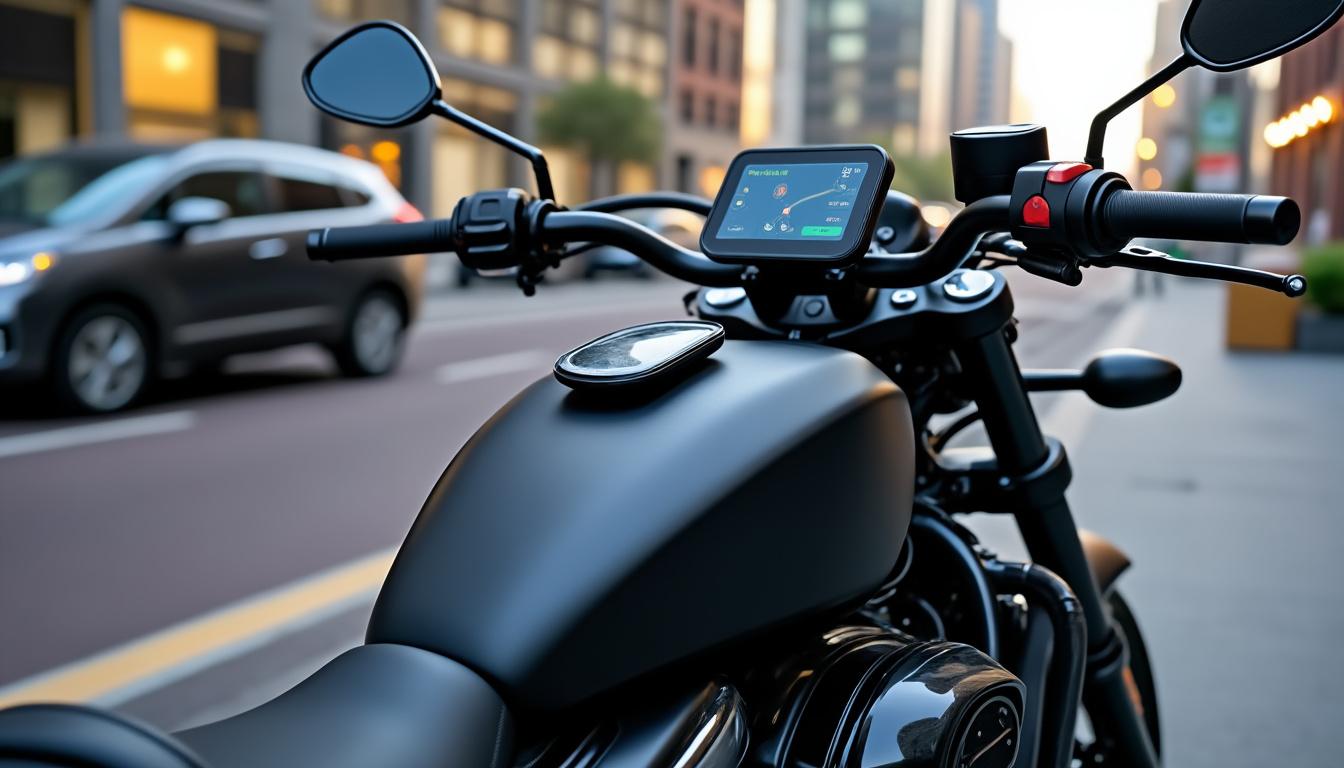Antisocial: the loss of your motorcycle, your car, or even your scooter can be costly!

Legislation surrounding two-wheeled vehicles and vehicles in general is at a decisive turning point in the United Kingdom, raising concerns about the protection of users. A government bill has recently been presented, aimed at facilitating the seizure and destruction of vehicles in cases of behavior deemed "antisocial". The implications of this reform could have considerable impacts for owners of motorcycles, cars, quad bikes, or even electric scooters. By 2025, this initiative could pave the way for institutional violence against drivers, calling into question the principles of respect and road safety. While France maintains a strict legal framework regarding confiscation, what will happen for British users who could easily lose their means of transport without the possibility of contestation? Let's explore the stakes and consequences of this potentially devastating legislation for drivers.
The Legislative Stakes Surrounding Vehicle Confiscation in 2025
The current British bill in 2025 would allow law enforcement to seize a vehicle and proceed to its destruction within two days. This contrasts sharply with the French legal framework, where such action is only possible after a court decision. In France, for example, the confiscation of vehicles is reserved for extreme cases such as repeat offenses of dangerous driving, while in the UK, a roadside check could render a vehicle “antisocial”, without clear definitions being established.
The Vague Nature of "Antisocial"
The term "antisocial" can lead to considerable abuses. Each law enforcement agency could interpret this word differently, creating an environment where discretionary power could lead to abuses. The risks are high: a simple behavior deemed inappropriate could cost vehicle owners dearly. In 2025, we could see thousands of vehicles seized and destroyed under troubling conditions.

Comparisons with the French legal framework are striking. In France, a period of reflection and justice is granted before any decision to destroy a vehicle, which guarantees drivers a form of protection. This difference could prompt many drivers to rethink their driving behaviors without the fear of immediate confiscation.
The Consequences for Drivers
The consequences of this legislation could be disastrous. In a short time, a driver could lose their vehicle and find themselves without means of transportation, which could lead to professional and personal complications. Imagine a professional who relies on their motorcycle or car to get to work: the immediate loss of their vehicle could lead to inextricable logistical dilemmas.
- Loss of means of transportation.
- Difficulties for a business appointment.
- Increased transportation costs.
- Impact on mental health and well-being.
In this situation, solutions such as motorcycle insurance or car insurance may not be enough to compensate for the effects of confiscation. Indeed, insurance policies typically only cover financial losses due to physical damage or accidents, but not losses related to a confiscation. In summary, this legislation could instill an atmosphere of fear and distrust among road users.
| Type of Vehicle | Risk of Confiscation (UK) | Procedure in France |
|---|---|---|
| Car | Immediate confiscation in case of antisocial behavior | Confiscation after court decision |
| Motorcycle | Potential destruction within 48 hours | Legal obligation for notification and appeal |
| Electric Scooter | Seizures at the discretion of authorities | Safety considerations before confiscation |
The Need for Effective Protection: Safety and Theft Prevention
As the legislative climate becomes more challenging for two-wheeled users, the issue of vehicle security and protection emerges as a priority. The skyrocketing number of vehicle thefts makes it essential to adopt theft prevention strategies. Thus, it becomes crucial to integrate appropriate security devices.
Vehicle Protection Systems
Modern technologies offer a multitude of options to ensure vehicle security while reducing the risks of confiscation. Among the most effective approaches is the use of anti-theft GPS which not only allows for tracking a vehicle in the event of theft but could also deter antisocial behaviors. Integrating a security system into a car or motorcycle could protect against financial losses and also enhance peace of mind among drivers.

Security devices can include several elements:
- Electronic and mechanical anti-thefts.
- Advanced alarm systems.
- Integrated location GPS.
- Training on safe driving.
Having a good security policy could also reduce the likelihood of police interventions. That said, users must be aware that these devices do not guarantee immunity but increase the level of protection for their vehicles.
The Role of Insurance in Supporting During Crises
In addition to these devices, motorcycle insurance and car insurance play a vital role in protecting users. In a world where the risks of confiscation are increasing, they must evolve to offer adequate coverage.
In case of seizure, a well-trained insurance could provide effective roadside assistance. Rapid intervention can not only mitigate financial consequences but also familiarize users with their rights. It becomes essential for insurance companies to review their offers, as a good contract could make a difference in the event of a vehicle confiscation crisis.
| Type of Protection | Security Measures | Assistance in Case of Loss |
|---|---|---|
| Physical Protection | Anti-thefts, guardianship | Roadside assistance |
| Technology | GPS, security mobile app | Quick location |
| Insurance | Coverage for losses | Legal support |
Vehicle Recovery: A Treacherous Path
The process of vehicle recovery in case of seizure proves complex, especially in an environment where laws can change rapidly. In 2025, with confiscation deadlines highlighted at two days, the chance of recovering one’s vehicle may be very limited. This situation creates immense pressure on users in the event of an accident or confiscation.
The Steps During Seizure
In the event of a seizure in the UK, users may quickly find themselves in a situation where they need to act swiftly. While current laws often allow them to contest a seizure decision, if the confiscation policy changes, this could lead to unexpected complications in the recovery process. If the British government adopts this legislation, a thorough understanding of user rights will be essential.
To facilitate understanding, here are the usual steps to recover a seized vehicle:
- Inform the authorities of the intention to contest.
- Gather evidence of good conduct history.
- Demonstrate the necessity of the vehicle (work, family transport, etc.)
- Gather information on specific deadlines and procedures.
These steps may seem simple, but the stress and speed of the procedure can work against users. Clear and accessible information on these processes becomes particularly crucial to avoid being forced to abandon one’s vehicle.
The Evolutionary Prospects for Users
With the rapid evolution of laws and standards regarding vehicles, cars, motorcycles, and electric scooters, users must remain vigilant. It is anticipated that driver advocacy organizations could emerge in response to new laws. In 2025, cooperation between drivers, insurers, and authorities may become necessary to navigate this new legislative landscape. Public debates will also be essential to ensure a citizen's ally in the face of laws deemed too coercive.
| Step | Description | Typical Duration |
|---|---|---|
| Notification of Seizure | Notice of vehicle confiscation | Instant to 48 hours |
| File Compilation | Gather necessary evidence | 2 to 5 days |
| Legal Appeal | Contest the seizure in court | Variable according to the judicial system |
In What Context Could User Protection Be Strengthened?
As we observe a growing trend to legislate for drastic measures against driving behaviors deemed unacceptable, it would be interesting to question whether a well-thought-out legislative framework could both sanction dangerous behaviors and protect well-meaning users. Questions surrounding urban safety and vehicle management are increasingly relevant in 2025. The need to find a fair balance between suppressing antisocial behavior and protecting legitimate users could become a priority for authorities.
Passive and Active Solutions
To achieve this balance, a combination of passive and active solutions could be considered. On one hand, improving road infrastructure and implementing urban security devices, such as surveillance cameras, could contribute to creating a more secure environment. On the other hand, a proactive approach from law enforcement through awareness campaigns on driving ethics could reduce behaviors deemed antisocial.
- Implementation of road education campaigns.
- Strengthening infrastructure (bike lanes, pedestrian access).
- Quick alert systems for drivers.
- Collaboration with bike brands for information sharing.
This could help to enlighten and empower users on proper driving, thereby preventing them from suffering premature consequences based on subjective judgments.
Unexpected but Necessary Conclusions
Beyond legislative considerations, it is worth emphasizing the importance of dialogue between users, local powers, and governments. In the age of rapid information, ensuring justice for all and providing adequate protection will be essential for users. Therefore, infrastructure, policies, and vehicle recovery practices must evolve to meet the demands of an increasingly complex world. Without a genuine willingness for change despite good conduct, two-wheeled vehicles, cars, and other means of transport could continue to suffer the effects of ill-suited laws.
Source: www.caradisiac.com
Leave a Reply


Articles relatifs